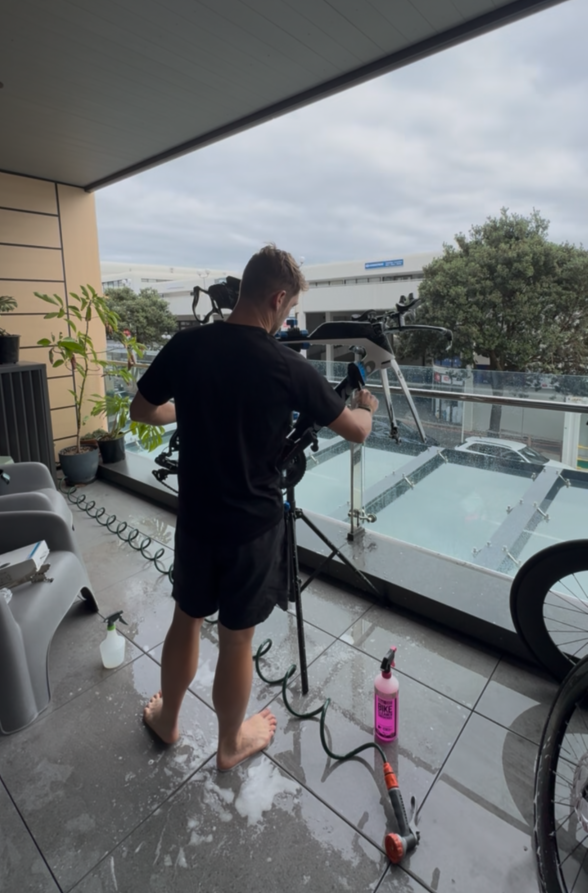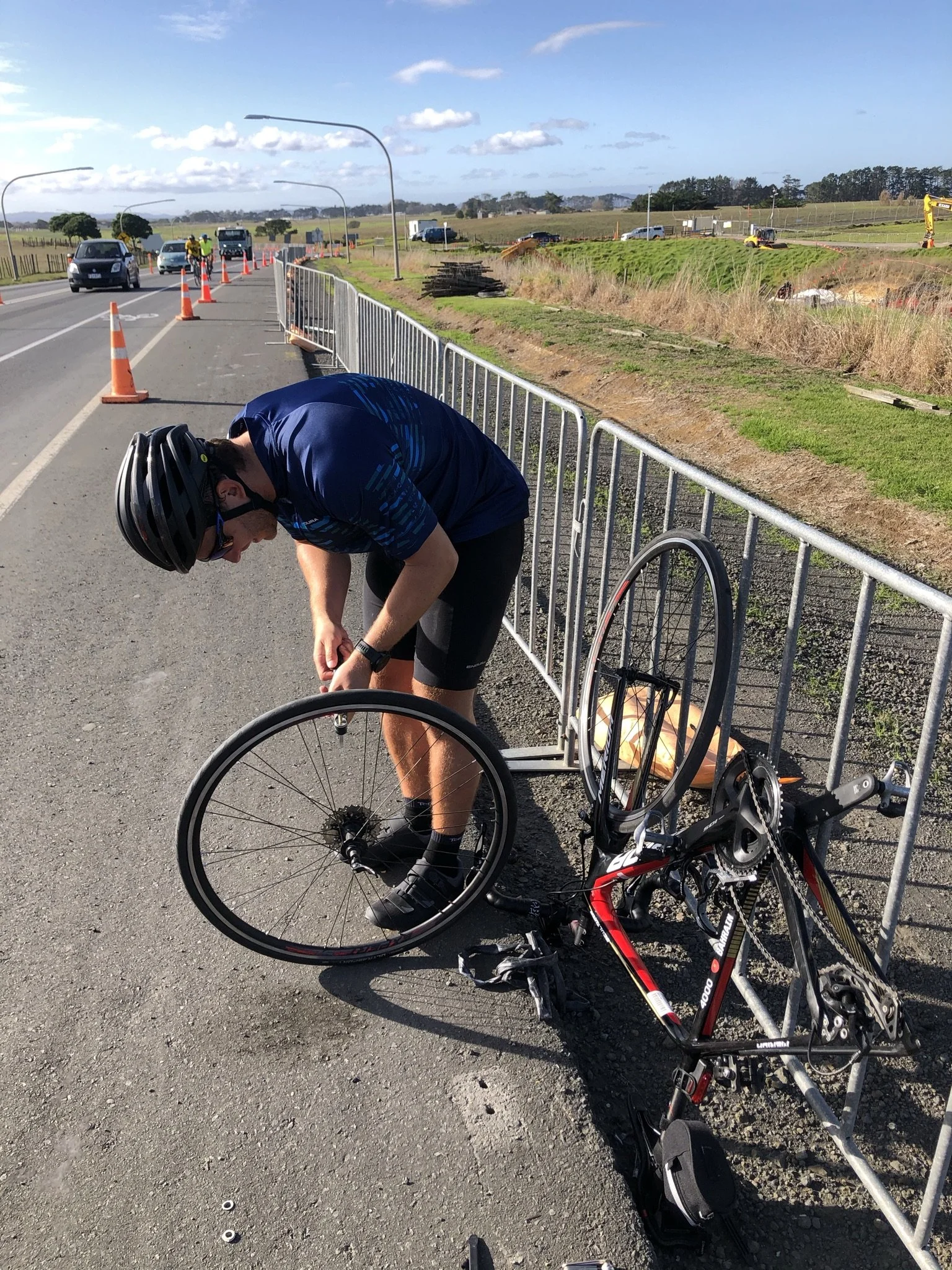Basic Bike Maintenance You Should Know
As a triathlete, your bike is one of your most important tools. It’s your partner for long training rides, race day performance, and everything in between. But no matter how advanced your bike is, it can only perform as well as it’s maintained. Knowing a few basic bike maintenance tasks can save you time, money, and mechanical headaches, especially when you're far from home on race day.
Here’s a simple guide to basic bike maintenance every triathlete should know.
Clean Your Bike Regularly
A clean bike is a fast bike! Sweat, road grime, and dust can corrode components and affect performance.
How to do it:
Use warm water, a sponge or soft brush, and bike-specific cleaner.
Avoid high-pressure hoses as they can force water into bearings.
Spray the chain with bike-specific degreaser, let it soak, scrub the chain and then rinse with water.
Air dry thoroughly and re-lube your chain (more on that below).
Tip: Clean your bike every 1-2 weeks during heavy training blocks or after straight after wet rides.
Check and Lube Your Chain
Your chain should move smoothly, not sound like it’s crunching gravel. Keeping it clean and lubricated prevents excessive wear and improves shifting.
Steps:
Wipe the chain with a rag after every few rides.
Apply a bike-specific chain lubricant every 100–200 km or after wet rides.
Wipe off excess lube to avoid attracting dirt.
Inspect Tire Pressure Before Every Ride
Tire pressure has a huge impact on comfort, speed, and puncture protection.
What to know:
Use a floor pump with a gauge.
To check which is the best pressure, enter the relevant tube and tire characteristics in the Silca calculator.
Check before every ride, as tires slowly lose air over time.
Bonus Tip: Consider adjusting PSI based on rider weight and road conditions.
Look Over Your Tires
Before heading out, check your tires for:
Cuts or embedded debris
Worn tread
Cracks or bulges
Replacing worn or damaged tires is cheaper than dealing with a mid-ride flat (or worse, a crash).
Check Your Brakes
You should be able to stop quickly and confidently. If your brakes feel spongy or slow, they may need attention.
Inspect:
Brake pad wear: if the grooves are gone, it’s time to replace.
Cable tension (for mechanical brakes) or fluid levels (for hydraulic).
Brake alignment: pads should hit the rim or rotor evenly.
Tighten Bolts
Every few weeks, give your bike a once-over with a torque wrench or multi-tool. Focus on:
Stem and handlebar bolts
Seatpost and saddle clamps
Crank arms and pedals
Use the recommended torque settings (usually printed near the bolts or in your bike manual) to avoid over-tightening.
Keep an Eye on Your Gears
Smooth shifting is essential for maintaining rhythm and efficiency. If your gears are skipping or clunky:
Check cable tension, especially if your bike has been sitting for a while.
Inspect derailleur alignment and the condition of the chain and cassette.
For more complicated issues, it’s worth a visit to your local bike shop.
Know When to Call the Pros
Some tasks are best left to professionals — like bottom bracket replacements, headset adjustments, or wheel truing. Regular servicing (at least twice a year) by a qualified mechanic ensures your bike is safe and performing at its best.
It’s also worth getting your bike booked in for a pre-race tune-up at your local bike shop around 2 weeks before your race.
Final Thoughts
Bike maintenance doesn’t have to be overwhelming. With a few regular checks and some basic know-how, you’ll not only extend the life of your equipment but also ride more confidently and efficiently.
Make it a habit. Check your bike every week, clean it regularly, and don’t wait until something breaks. Your future self (especially on race day) will thank you.

